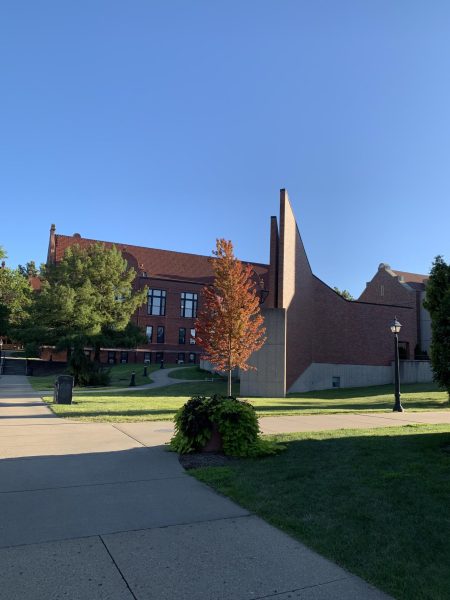Potawatomi and Millikin
Past and Present Colliding
This past Tuesday, hundreds of years of knowledge and stories stepped through our campus doors. Though they have been to Decatur before, this was the first time the Potawatomi came to Millikin. When they did, they gave students a rare and enlightening look into their past struggles and way of life.
The event, organized largely by Sarah Crockarell, took place in the banquet rooms of UC. Bursting from the gills with members of the Caravan and faculty, students ended up lining the walls and the floors.
One student, Madison Roberson, expressed the importance of her coming because she had some Native American Ancestry. She wanted to learn more about the Potawatomi people.
The event helped members of MU learn from the Potawatomi in a variety of ways. After Millikin kicked off with a brief dinner and a statement acknowledging that the land on which Millikin is built once belonged to the American Indians, the guests spoke.
“While we were were given a nickel an acre, the government would turn around and sell it for a $1.25,” George Godrey, an expert on the Potawatomi and a member of the tribe, said.
He elaborated on how settlers and the government took away their land piece by piece through treaties. Then, when many of the last Potawatomi didn’t want to leave, the government forced them out by “Gunpoint and Bayonet,” resulting in the forced removal and subsequent march across four states that caused over 40 deaths due to a mix of lack of resources and typhoid fever.
After he spoke, the floor was opened up to the room for questions and one of the first was surrounding the traditional garb that Godfrey was wearing.
Which Godfrey explained with the help of Shirley Willard, one of the founders of the Trail of Death Caravan, who was also wearing traditional garb, that the designs we saw were traditional to the the 1800’s of what the Potawatomi would have worn due to an artist at the time painting and sketching Native Americans during the time period. He than explained some of the lesser-known reasoning behind the design of the traditional garb.
For example, where a Native American hung his tassels was a sign of his marriage status while the beadwork on moccasins could mean many different things depending on the tribe or occasion.
Those at the banquet also explored music and dance of the Potawatomi people, as the crowd was curious about this topic. Drums and singing, students learned, along with the flute drove the music. In Native American dance it’s important to know what kind of drum is being used because some drums have a different number of beats a measure and how you should be singing.
Godfrey gave an example of you didn’t want to be caught with your foot up at a Native American dance competition because you could get points off.
Towards the end of the event some of the other guests talked about the work they were doing in regards to the Potawatomi. Peggy Anderson for example, talked about the Book she wrote called Two-Moon journey.
“‘Two Moon Journey’ tells the story of a young Potawatomi Indian named Simu-quah and her family and friends who were forced from their village in Indiana where they had lived for generations, to beyond the Mississippi River in Kansas,” Anderson said.
While the room discussed aspects of the Potawatomi story and culture, the Millikin students in attendance wanted to know what the Caravan thought they should takeaway from this experience and the story of the Potawatomi. After a brief moment of thought they answered with more questions.
What tribe owned your land before you? What happened to them? Where are they now?
They wanted us as students, especially those of settler descent, to remember to “respect other people, your elders and their way of life” and to not let history be taken away from us or to forget it so we don’t repeat the mistakes of the past.
The Potawatomi isn’t a reenactment or reproduction, it is their story and their way of saying, “We are still here” and “We are leaving this a legacy for our people a 100 years from now.”










